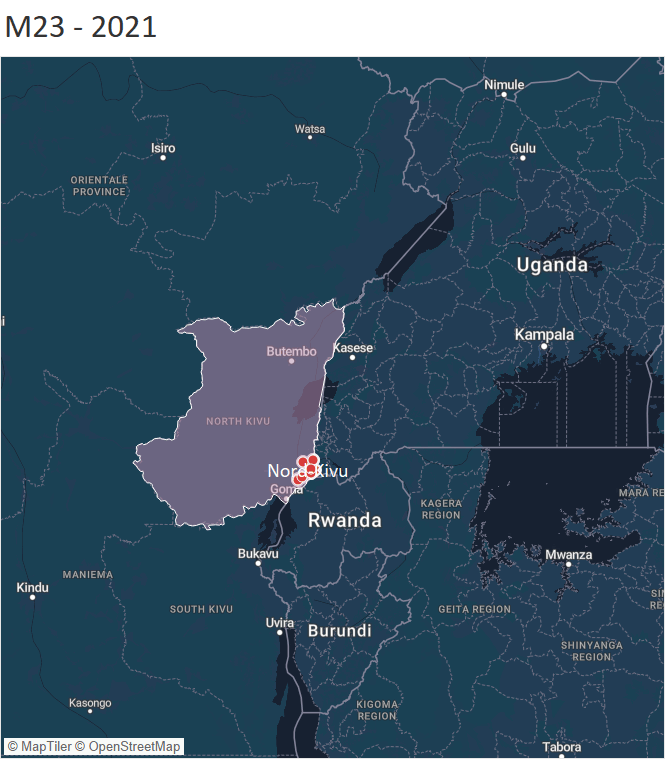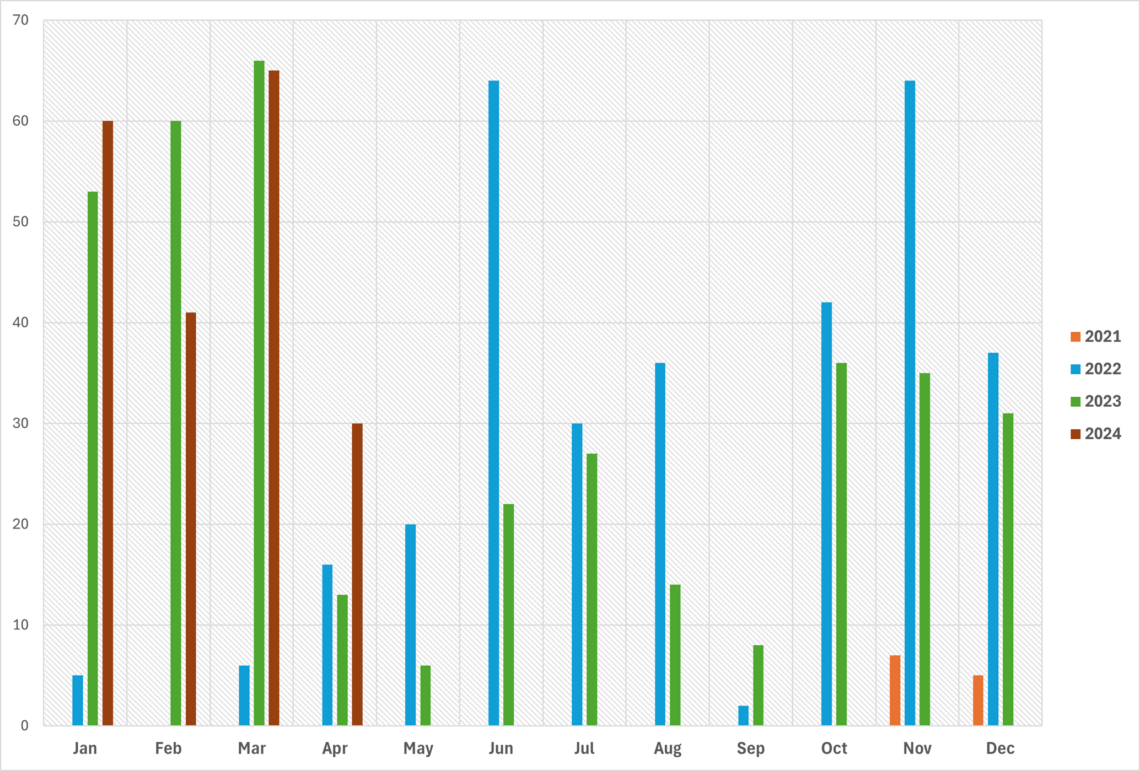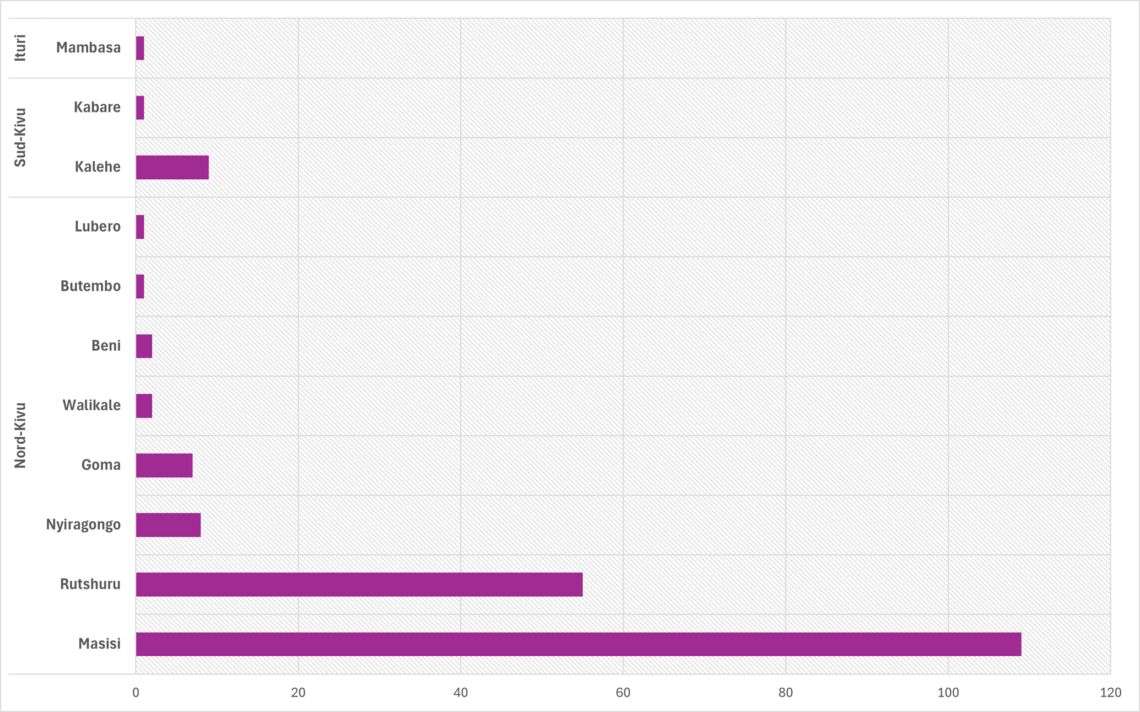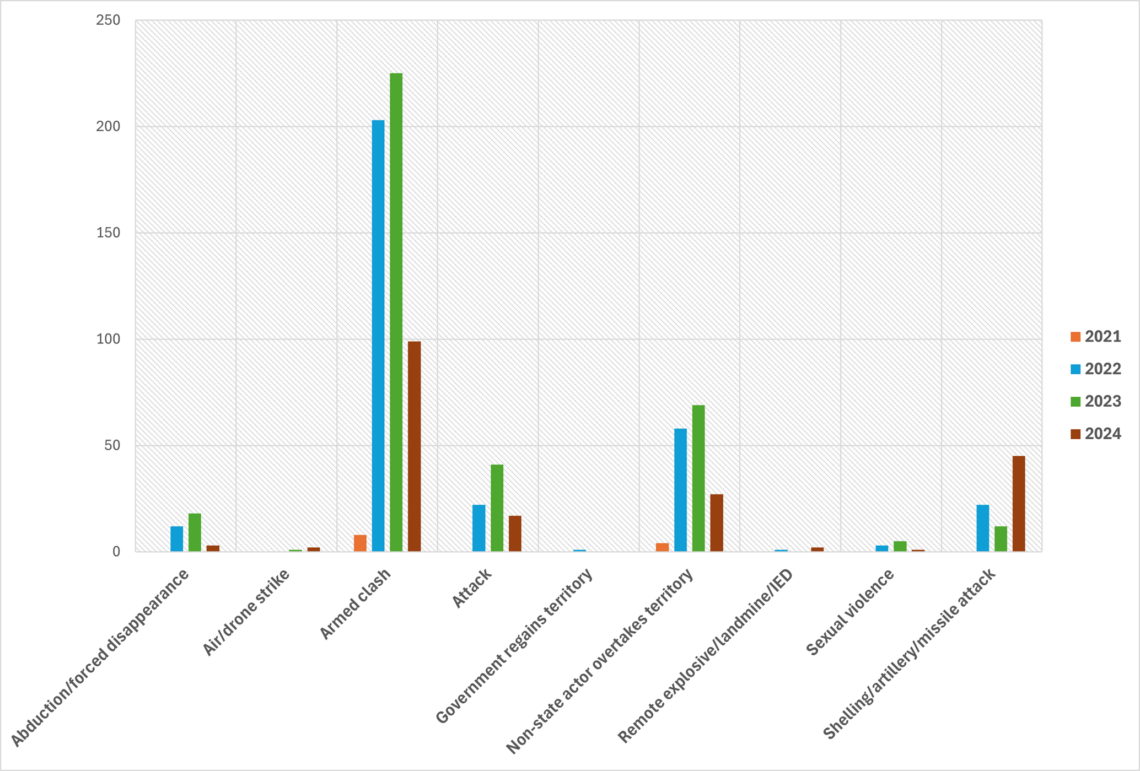The Democratic Republic of the Congo (DRC) continues to experience an escalation in conflict in its restive eastern provinces. Over 2023, long-standing conflicts in these regions fuelled another unstable year in the country with some of the violence being motivated by tensions over the December general elections. However, most of these violent incidents were instigated by various armed groups in the country including the March 23 Movement (M23) and the Allied Democratic Forces (ADF), primarily in the North Kivu and South Kivu provinces. More recently, the threat presented by the M23 has become increasingly elevated as the rebel group appears to be advancing towards the North Kivu administrative capital of Goma city. The ongoing assaults have emerged as the group’s most significant offensive in eastern DRC since 2012, further threatening DRC’s sovereignty due to the M23’s alleged ties with Rwanda.
Background on the M23
The M23, also known as the Congolese Revolutionary Army, is a rebel group active in eastern DRC, particularly in the North Kivu Province. The group emerged from a previous rebel group, the National Congress for the Defence of the People (CNDP), which fought the DRC government from 2006 to 2009 after which it was integrated into the Congolese army through a peace deal. However, in 2012, a group of former CNDP soldiers mutinied, accusing the government of not upholding its end of the peace agreement. This resulted in the formation of the M23, which derived its name from the date (23 March 2009) of the accord signed by the CNDP. The accord included key elements to fully integrate Congolese Tutsis into the army and government. The M23 rebels also made additional demands, citing issues of human rights, democracy, as well as good governance.
In the same year, 2012, the M23 rose to prominence when it briefly captured the city of Goma for ten days – from 20 November to 01 December 2012 – before it withdrew following discussions between the M23 leadership and the chief of Uganda People’s Defence Force. In 2013, international efforts led to a ceasefire after a peace accord was signed between the DRC government and various states – including Rwanda and Uganda – towards addressing issues raised by the M23. The accord resulted in a period of relative calm until late 2021 when M23 resumed attacks.

Map of M23 activity between 2021 to 20 April 2024. (ACLED)
M23 motivations and claim to Goma
The M23 – as well as its parent CNDP group – claims to fight for the rights of Congolese Tutsi and Kinyarwanda-speaking minorities in the North and South Kivu provinces, who they felt were not protected by the government from Hutu militia groups. These issues mirror those motivating other armed groups in the country, given its long history of ethnic tensions, such as the CODECO (Cooperative for the Development of the Congo) and the Zaire militant groups which fight for the rights of the Lendu and Hema ethnic communities respectively, and frequently conduct attacks or clash with one another in the Ituri Province.
The ethnic grievances presented by the M23 have also taken on a regional territorial dimension following a statement by Rwandan President Paul Kagame early last year. Addressing the M23 resurgence in February 2023, Kagame intimated that the violence was largely motivated by the “denial of rights to former Rwandans absorbed into DRC by historical boundaries”. Giving further credence to this claim, the Tutsi and other marginalised groups in the North and South Kivu provinces are often referred to as “Rwandophones” as they are considered of Rwandan descent. Notably, these linkages have seen the M23 enjoy some level of support from residents in the two provinces while also being warmly received by some, including soldiers of the Congolese army (FARDC), during its takeover of Goma in 2012.
The current situation
While the resurgence of M23 attacks began in late 2021, the latest spate of attacks by the rebel group notably picked up in the final quarter of 2023. Since October 2023, ACLED data has recorded approximately 30 attacks by the group each month until January 2024 when 65 assaults were reported – the highest per month since March of the previous year. Notably, 196 incidents have been recorded in 2024 so far (between 01 January and 20 April), setting up the first quarter of this year to be among the most active periods for the group since 2021. Comparatively, the incidents in the first quarter of 2024 represent 53% of the total (371) incidents attributed to the M23 over all of 2023.

Geographically, M23 assaults have remained predominantly concentrated in territories in the North Kivu Province, particularly Rutshuru, Masisi and Nyiragongo. However, the latest assaults have seen the rebel group shift its focus to the Masisi Territory and the neighbouring Goma environs. Demonstrative of this shift, four M23 assaults were recorded in Masisi Territory in October 2023, rising to 22 in November and 26 in December. Since January this year, Masisi has accounted for over 80% of all M23 attacks in the country, further demonstrating the significance of the region to the militant group. The shift has also seen the group conduct attacks around Goma’s environs for the first time since 2013.

The majority of this year’s attacks (41%) have occurred around the Sake area (and the wider Bahunde chiefdom region), which is approximately 25km Northwest of Goma, and have increasingly advanced towards the capital. As demonstrated by the earlier map showing M23’s geographical progression since 2021(see map of M23 activity since 2021 above), this movement increasingly signals the rebel group’s intention to advance on the city. Indeed, on 14 February 2024, M23 recorded its closest attack to Goma when the group fired mortar shells against one of the bases of the South African contingent of the Southern African Development Community Military Mission in the DRC (SAMI-DRC) in the city, killing two South African soldiers and injuring three others. Previously, on 02 February 2024, the group fired shells at a school in the Mugunga neighbourhood, less than 10km from the Goma CBD, injuring at least three people in the explosion.
The series of attacks this year has so far resulted in the group’s capture of various areas in the Masisi Territory, including Kibirizi, Kashalira, Kirima, Nyanzale, Katwe, Rwahanga, Kabanda, Kikuku and Kibungu (see relevant Castor Vali Alert issued on Thursday 07 March 2024). Additionally, its ongoing assaults around Sake have resulted in significant disruptions to movement to and from Goma with reports in March 2024 indicating that the rebel group controls almost all supply routes into the city. This has prompted increased commodity prices in the capital and an influx of refugees; according to the UN High Commission for Refugees (UNHCR), more than 230,000 people fled to Goma in February 2024 alone.
Besides the new attacks in and around Goma, this year has also recorded a shift of M23 attacks into South Kivu Province, a region that has previously not been impacted by the group. These attacks in South Kivu have mainly concentrated on areas along the main route to Sake, such as Kalehe and Kabare, likely aimed at further disrupting road movement to Goma.
Change in tactics in 2024
Additionally, ACLED data has also recorded a sharp rise in the use of explosives (remote explosives/landmine/IED) and remote violence (air/drone strikes and shelling/artillery/missile attacks) since late last year. Comparatively, 49 such incidents have been reported in 2024 so far up (between January and 20 April) from 13 and 23 recorded across 2023 and 2022, respectively. This trend of explosives assaults mirrors those recorded in 2012, during the M23’s short-lived capture of Goma. Notably, since January 2024, the group has predominantly employed the use of explosives and remote violence in areas around Goma highlighting further similarities with the 2012 incursion. Nonetheless, the use of small arms has remained the primary tactic in M23 attacks accounting for about a third of all its activity this year as demonstrated in the graph below.

The current threat to Goma
The recent surge in fighting threatens to isolate Goma and exacerbate the region’s building refugee crisis. Notably, the elevated threat of M23 attacks in Masisi, and the neighbouring territory of Rutshuru, has prompted increased security presence around the administrative capital of Goma with reports indicating that troops from the United Nations (UN) MONUSCO peacekeeping mission, FARDC and SAMIDRC remain entrenched around the city and the neighbouring town of Sake. While this will likely prevent M23’s capture of these localities, it potentially limits FARDC reach in other areas where M23 is operational and could see the rebel group further consolidate its position in Rutshuru Province over the near-medium term ahead of any planned offensives against the capital.

The future trajectory remains uncertain. Notably, the M23’s sustained assaults since late last year demonstrate its capacity to take on counteroffensives by the FARDC and its allied forces. The group’s capture of several areas and its continued attacks closer to Goma, including against a military base within the vicinity of the CBD, further demonstrate these capabilities, especially considering the ongoing security operations. Indeed, in one notable capture this year, the M23 has demonstrated its capability to maintain control of areas such as Rwindi which was captured around 10 March 2024. Rwindi Is located approximately 100km north of Goma, within North Kivu’s Virunga National Park that straddles Lake Edward. By late April, the M23 had reportedly overrun the park – including all surrounding villages up to Vitshumbi on the coast of Lake Edward – following the evacuation of local and regional forces prompted by a 48-hour ultimatum issued by the group on 21 April (see relevant Castor Vali Alert issued on Monday 22 April 2024).
Compared to its 2012 incursion of Goma, the M23 in its current form is considered stronger, and having more sophisticated weaponry. On the other hand, the government’s response is also stronger compared to 2012. While the M23 faced insignificant military resistance in 2012, the current assaults are being countered by larger contingents composed of local and regional forces. However, various political and operational issues with the FARDC such as corruption and underpayment – as well as silent alliances between the M23 and some DRC soldiers – remain likely to impact the coordination of these security operations.
Nonetheless, Rwanda is expected to remain key in resolving the current threat of the M23 as has been demonstrated by its roles in the signing of previous truces. Notably, on 11 March 2024, President Kagame expressed his willingness to meet with his Congolese counterpart, Felix Tshisekedi, to address tensions between the two countries following a bilateral engagement with Angolan President Joao Lourenco. Kagame’s meeting with Lourenco followed another between the Angolan and Congolese presidents in February 2024 during which Tshisekedi preconditioned his meeting with Kagame on the withdrawal of all Rwandan troops and military assets from North Kivu. It remains unclear if Tshisekedi will meet with Kagame in the absence of the Rwandan military’s withdrawal from the DRC. Nonetheless, the willingness of both leaders to meet could portend the start of a dialogue process in the near-to-medium term, particularly as regional pressure to bring an end to conflict escalates. While the M23’s capture of Goma remains in the balance, the ongoing conflict between Rwanda and the DRC is not expected to escalate into a full-scale war due to political and economic considerations by both governments.
Castor Vali Support
To support our clients in tracking, forecasting, and mitigating the above risks, Castor Vali has developed a variety of tools, including intelligence subscription packages and in-house training.
To read more about our products and services see our Africa Security Information Service.
We also encourage our clients to test our services and offer free trials to interested clients at any time. Please complete the form below to access these reports:
Security Information Service Trial
Clients interested in trailing our subscription packages should complete this form:


